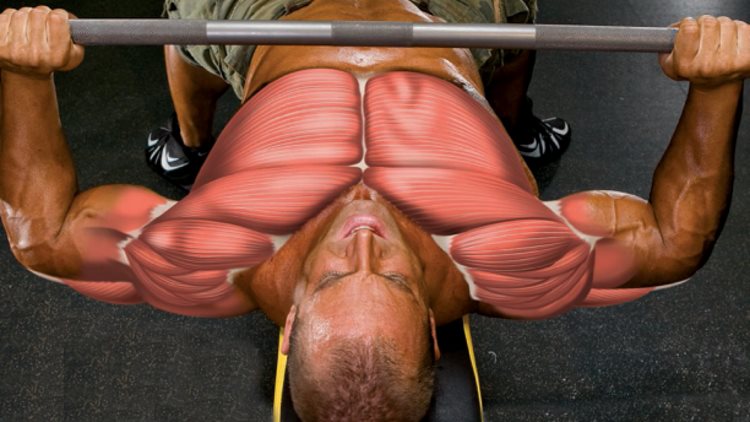Almost all people who’ve ever exercised in a gym tried their hand at bench, which is only normal, because bench is the perfect exercise for big and developed chest. Yet, very often we find people who would tell you that they decided to stay clear of the bench press, fearing an injury or a torn muscle.
This is a great mistake, because no exercise can truly substitute the bench press when it comes to building up your upper body. However, if you want to squeeze out the maximum potential and avoid being injured, you should learn to do it the right way.
Luckily for you, we can help you with that. Here you’ll find an elaborate guide how to perform this exercise correctly, with explanations about each step. So, next time you hit the gym, don’t shy away from the bench. Just have in mind our instructions and start flexing those chest muscles.
1. Lie down on a bench. Put your feet on the ground opened wider then shoulder wide. Bend your legs at knees so that they make a 90-degree angle.
2. Remember to slightly arch your lower back so that your spine preserves its natural curve.
3. Your glutes should be firmly contracted all the while, and pressed into the bench just as your shoulders.
4. Put your hands on the bar opened beyond shoulder width and grip the bar firmly.
5. Take a deep breath, which helps you increase the pressure in your chest and abdominal cavity. Hold the breath while lowering the weight.
6. Lower the bar to the level of your nipples in slow and controlled motion. Two seconds for lowering down and two seconds for pushing up should be enough.
7. When lowering the bar star squeeze your scapulas together. In this way you add stability to your your shoulder girdle and your lats will be ready to push up the weight.
8. When the bar is in the bottom position at your chest, your arms should form a letter L.
9. Concentrate on your shoulders and feet before starting to push the weight up. Push your shoulders into the bench and your heels into the floor as if you are trying to push the floor away. Stabilize your legs while pushing the bar up so that more force is transferred into your upper body, and remember not to lift your buttocks off the bench.
10. Avoid flexing your wrists, because this can reduce the force of your arms, and the overall strength. So hold the bar firmly with your thumbs wrapped around it.
11. Transfer the force from your chest, shoulders and triceps to the bar squeezing it as firmly as you can.
12. Pull your arms outward energetically without releasing the grip, and press the bar upward as straight as it can.
13. Exhale after reaching the top position.
14. Squeeze your pecs with force after you’ve ended your movement, in order to be sure that you are focusing on this muscle group and promoting further muscle growth.
15. In order to be sure that you haven’t released the tension from the muscles do not rest the bar on the rig when you’re at the top of the movement.
TEST YOUR 1RM ON THE BENCH PRESS
Before starting single rep bench press, try to determine your maximum rep strength. First do several easier sets to warm up. Maintain rep range under 6 in the first two sets. As you get closer to the maximum weight you think you can handle, reduce the rep range for 1 to 2 reps. Remember not to push yourself to muscular failure during the warm up, and rest between each set.
After covering the warm up, it is time to truly test your one rep strength. Take the amount of weight that you normally lift when doing 6 to 10 reps, and increase it by 30 to 40 percent. Lie on the bench and take a try doing only one attempt. If you can handle this, add 5 to 10 pounds and make another attempt after a several minutes rest. If, on the other hand, you have not been successful in lifting it, remove 5-10 pounds. Repeat this until you’re able to complete the movement once.
BENCH-PRESS SPLIT
MONDAY: Heavy chest, plus shoulders and abs
TUESDAY: Back and traps
WEDNESDAY: Legs and calves
THURSDAY: Light/explosive chest, plus abs
FRIDAY: Triceps, biceps and forearms
SATURDAY: Rest
SUNDAY: Rest
